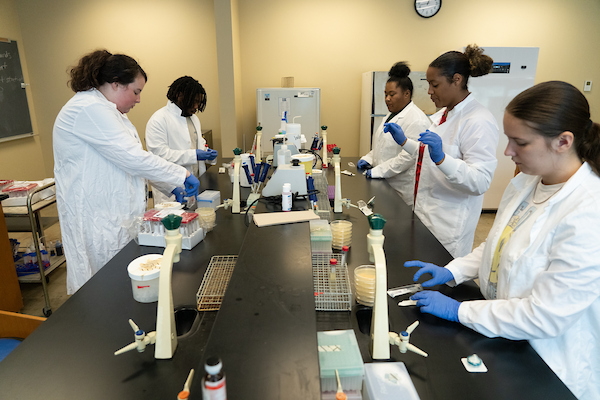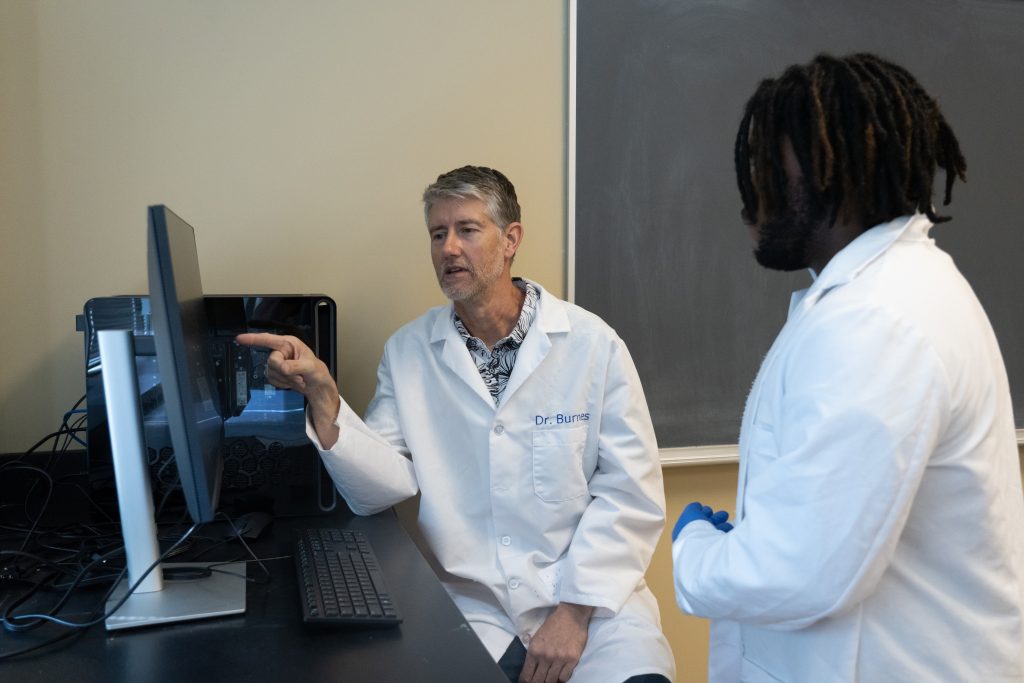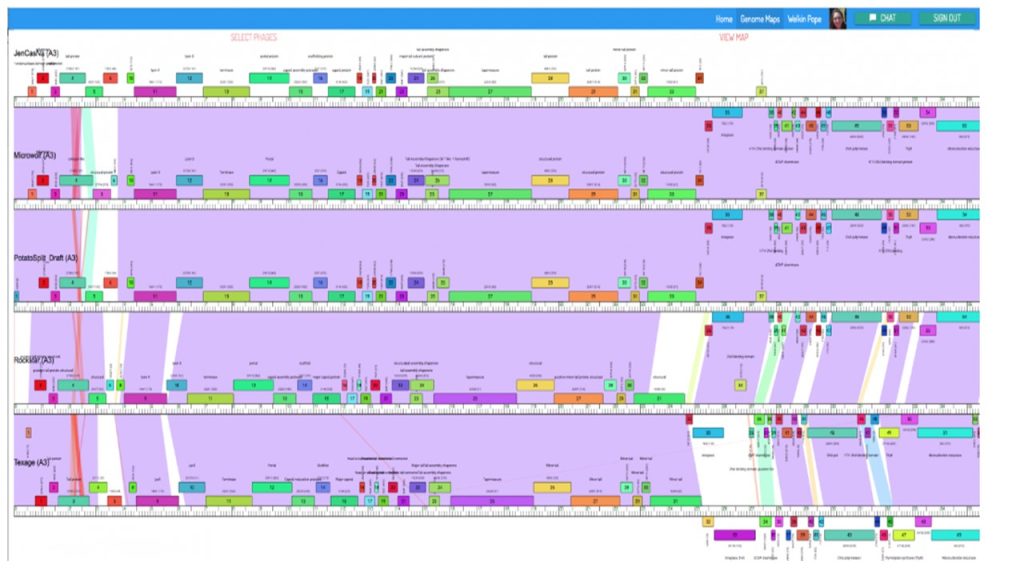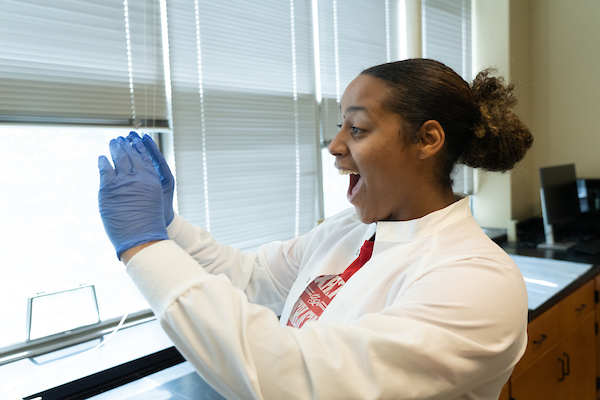Bioinformatics
The second semester of the two-semester SEA-PHAGES sequences, BSB 172 Biology II, is an inquiry-based course dedicated to learning the tools of bioinformatics to apply them to the phage viruses the students have isolated and named in the first semester, BSB 171 Biology I.

Biology is full of patterns and variations. We see patterns in the organization of the bodies of animals, patterns in the structure of plants, and patterns in the populations of organisms present in different biomes. Technological advances have yielded a feast of molecular biological data—including the human genome at 3 billion bases long. DNA is a deceptively simple molecule—only four different nucleotides structured in an anti-parallel double-helix—but it encodes the instructions for all the complexities of life. How can you, as a human scientist, hope to find the meaningful patterns in the sequence of 3 billion bases? Your human brain needs help— and that is where computers and the field of bioinformatics come in.

Bioinformatics is the science of recognizing meaningful patterns within a large pool of biological data using computers.

In BSB 172 Biology II, the SEA-PHAGES bioinformatics semester, our goal is to take our phage from BSB 171 Biology I, the Discovery semester, and annotate the phage genome. We do this while learning how to use specialized bioinformatics programs and genome visualization software that will allow us to:
- Find all the protein and tRNA genes in a finished phage genome sequence.
- Figure out exactly where these genes begin and end.
- Determine what function the predicted phage proteins may have.
Annotation is the process of assigning functions to our DNA sequences and documenting all our decisions. When we are finished, the students will contribute their annotated genome sequence to a global database. In doing so, the students will become published bioinformatics scientists!

Return to:
